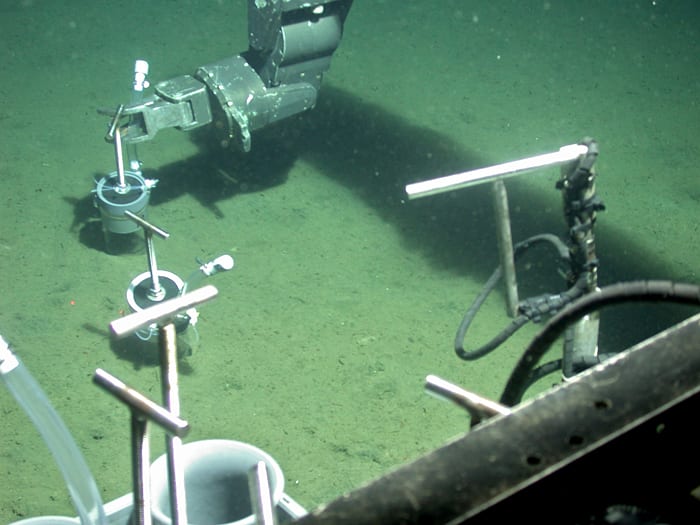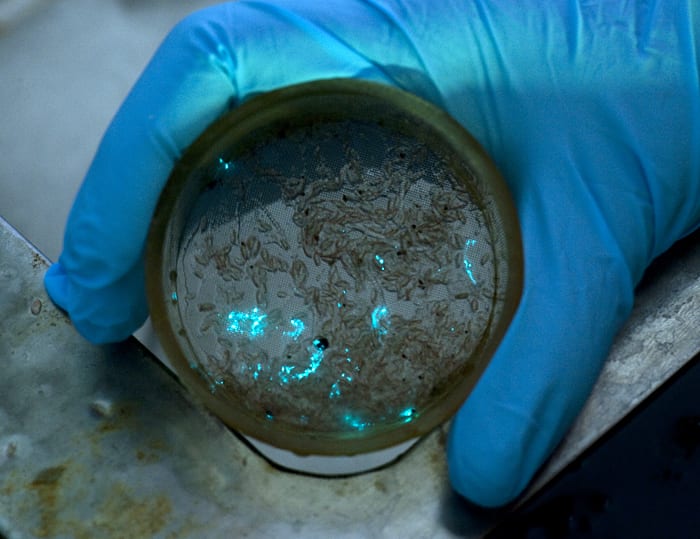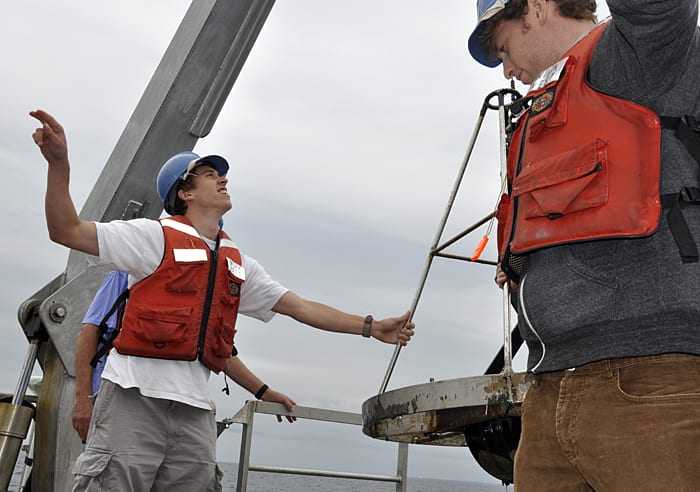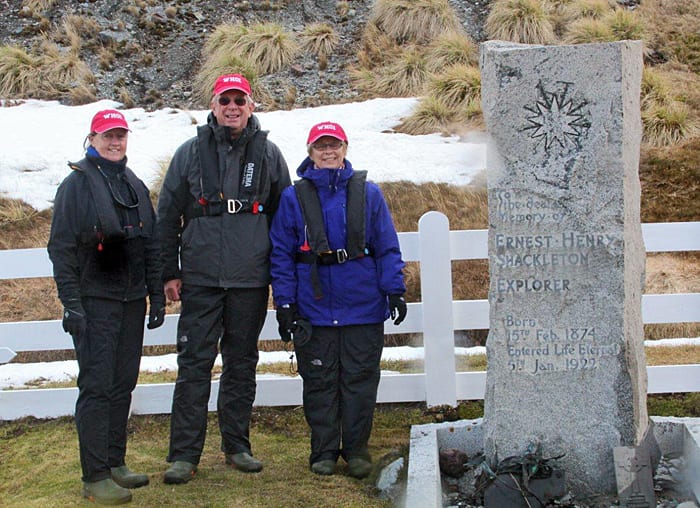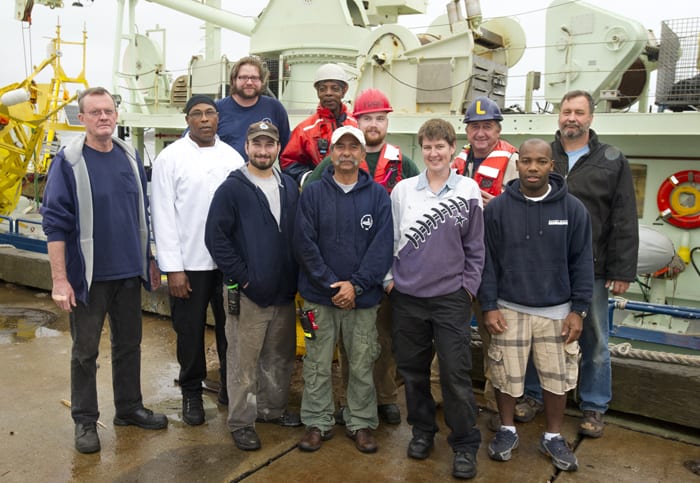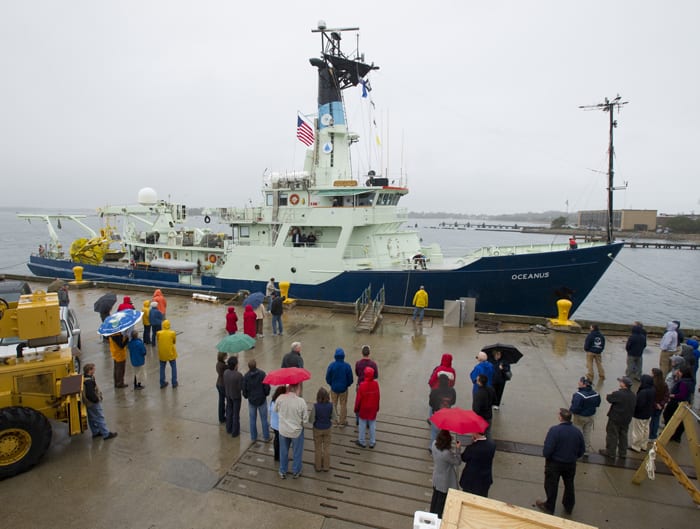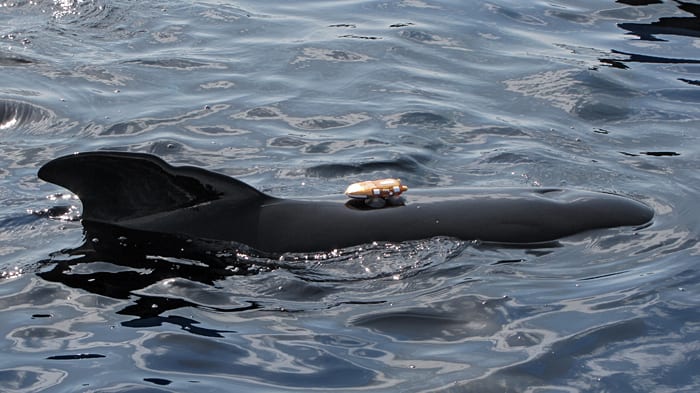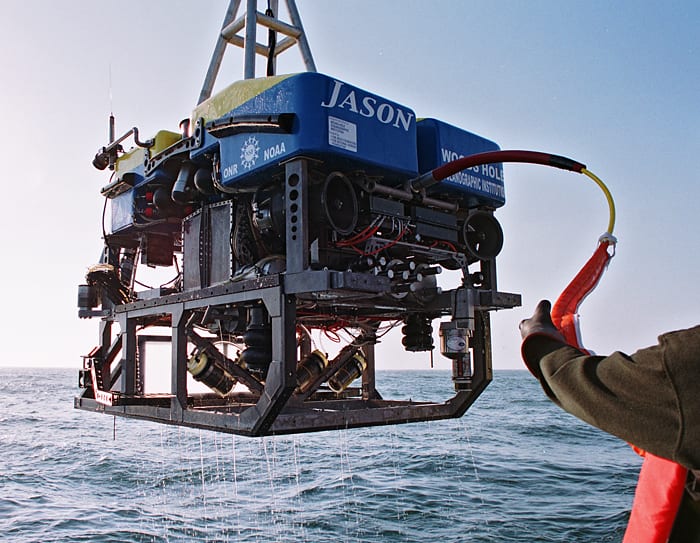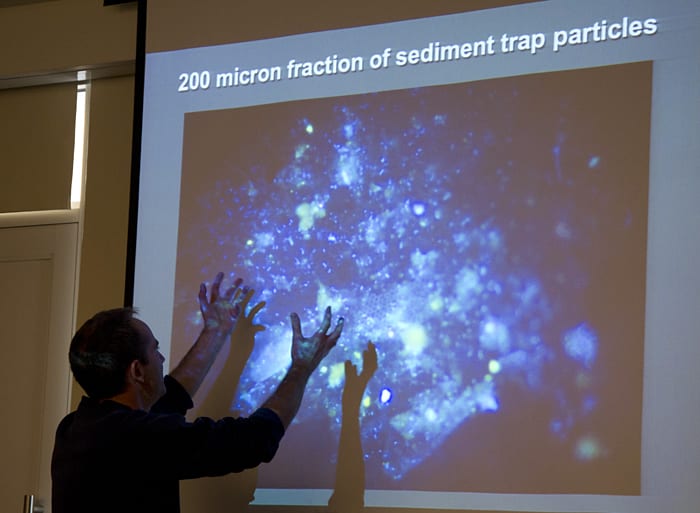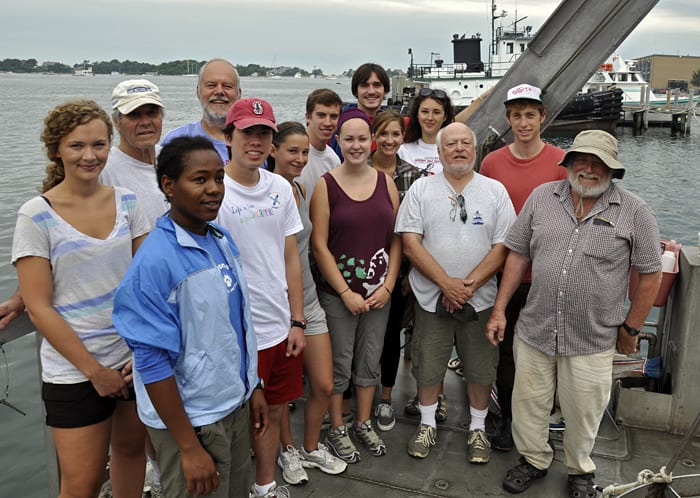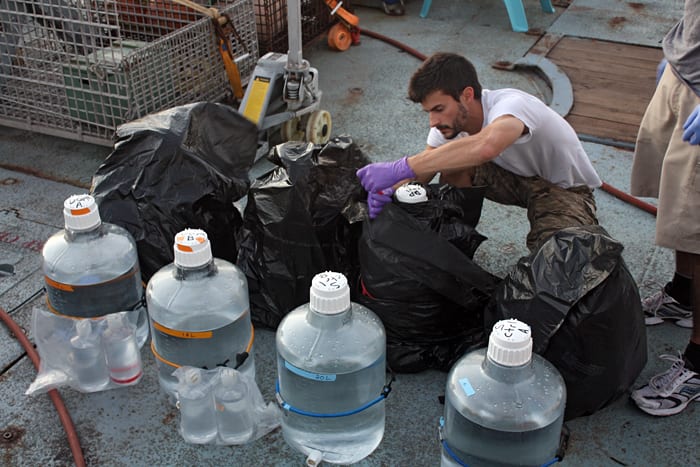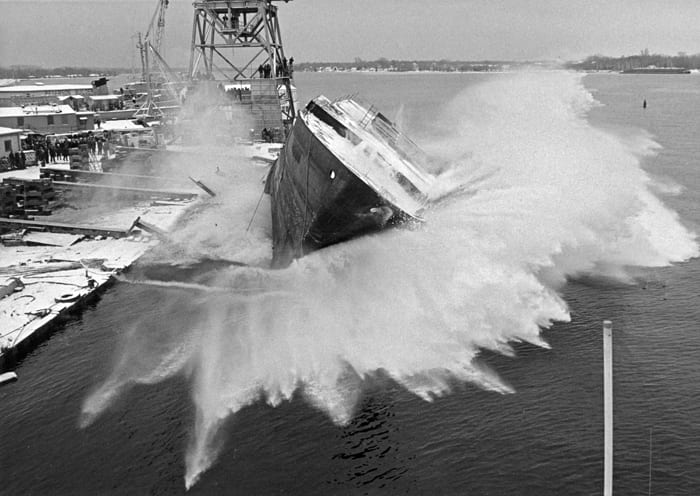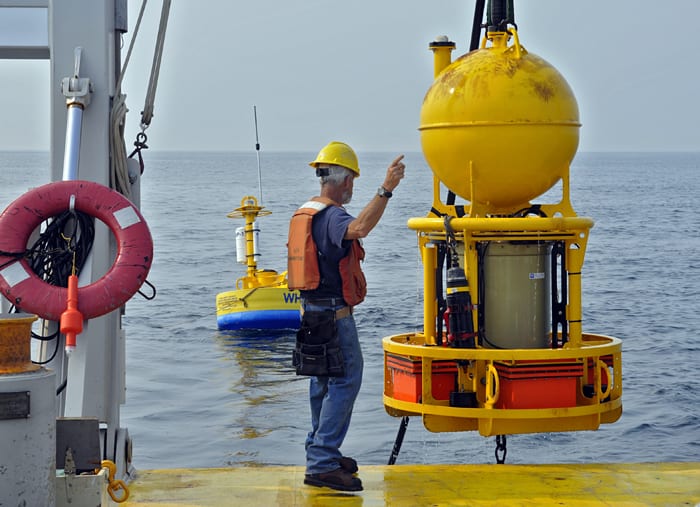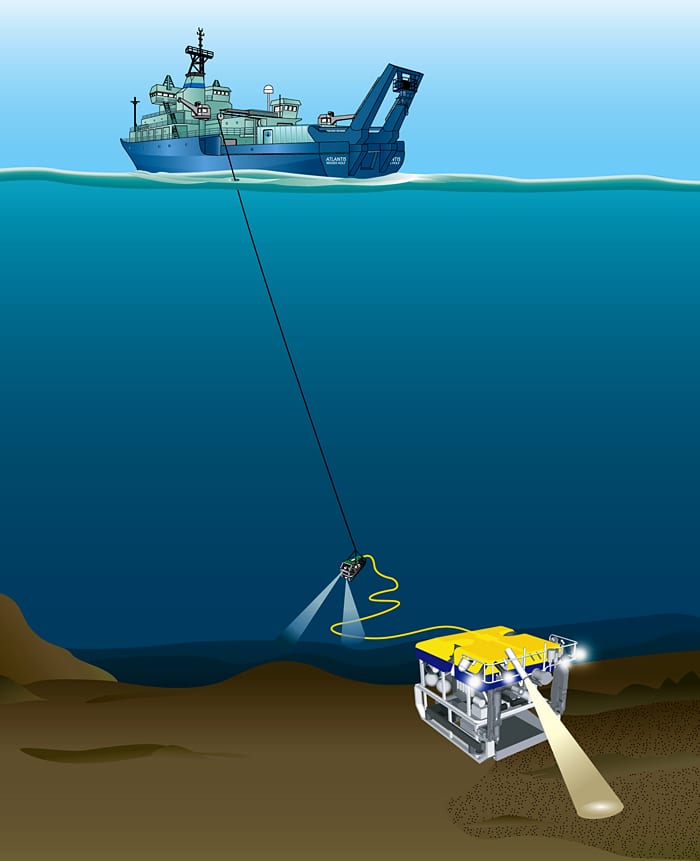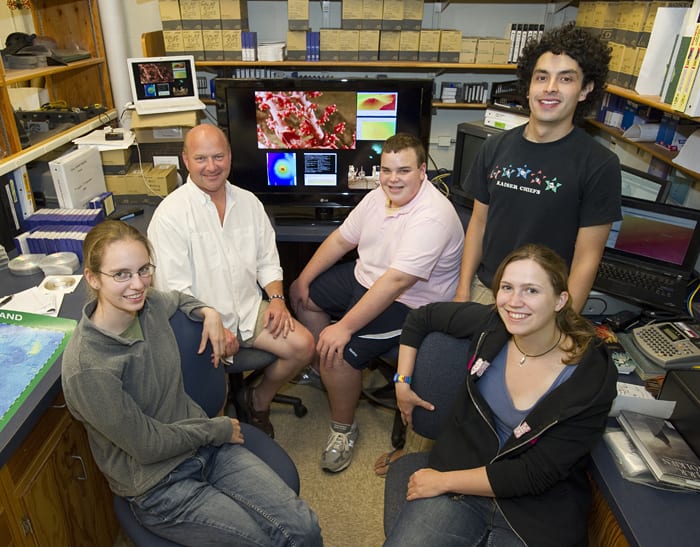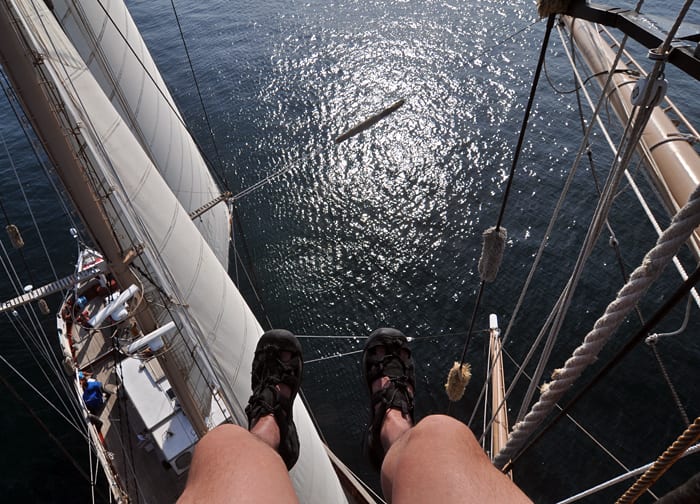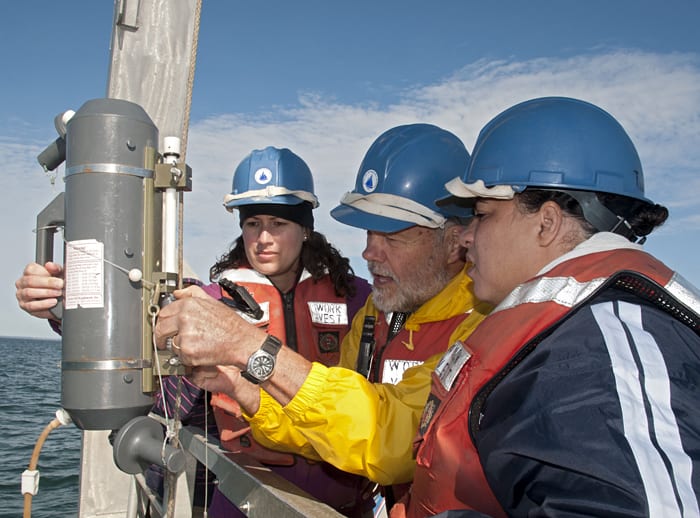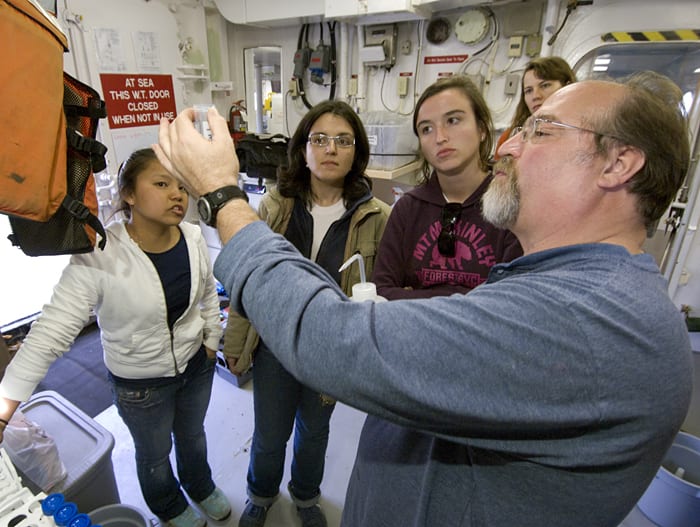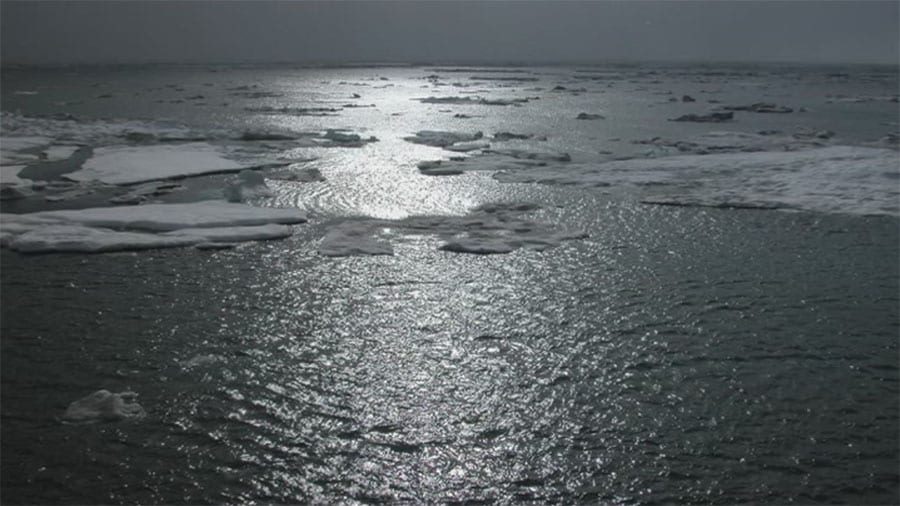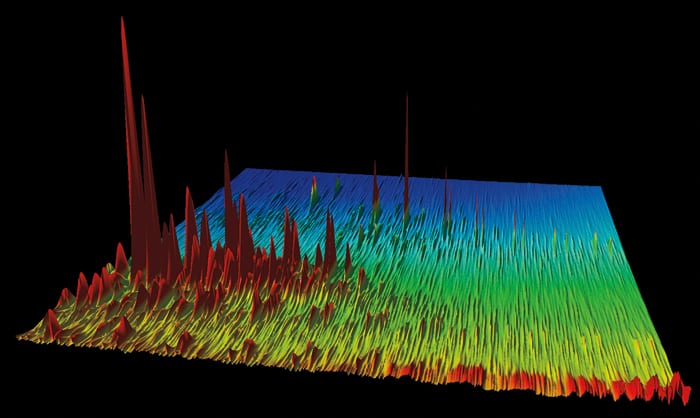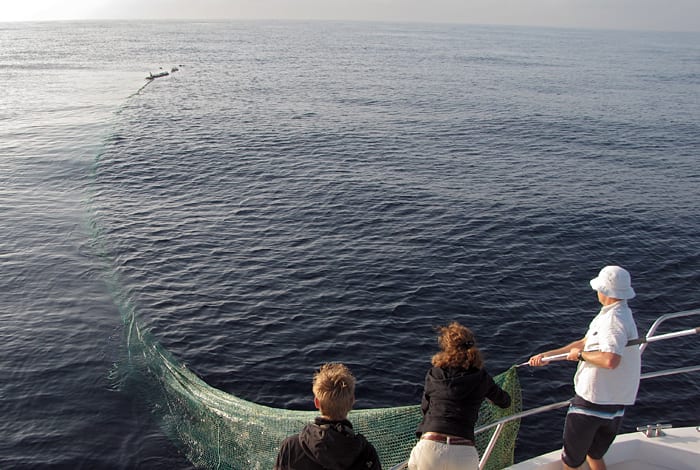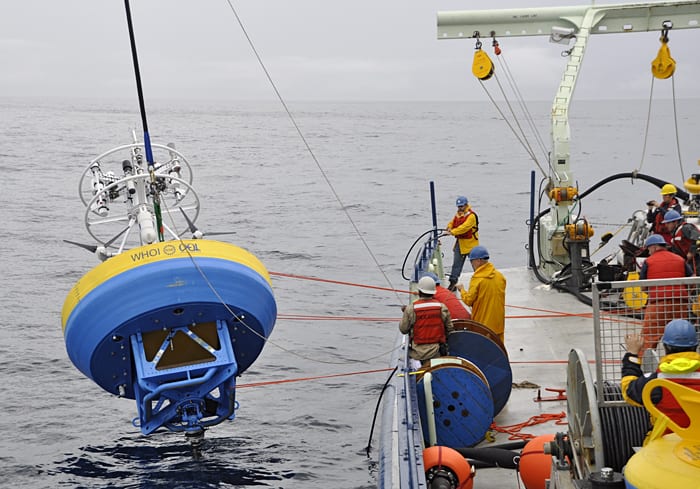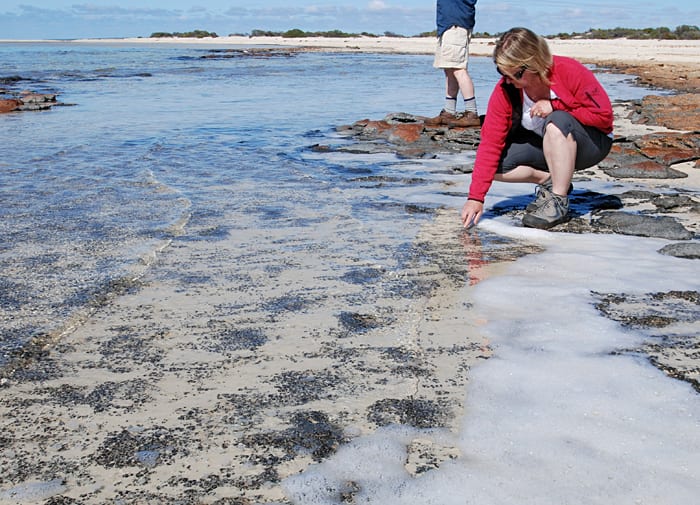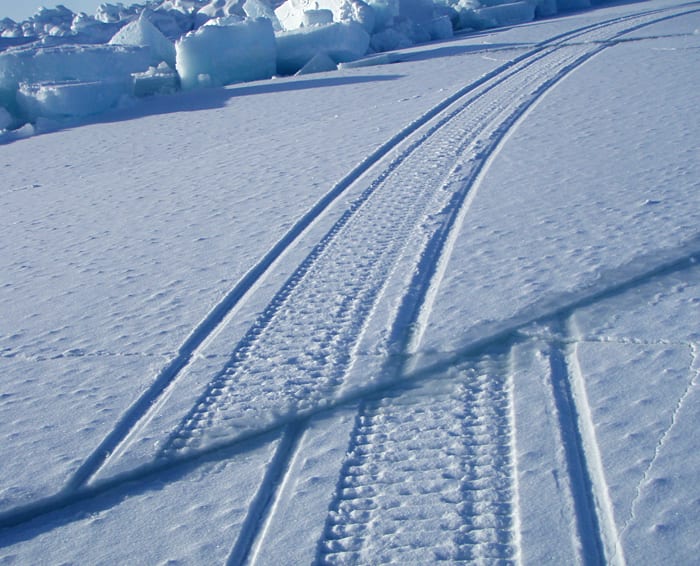Multimedia Items
P-U-S-H!
A manipulator arm of the remotely operated vehicle (ROV) Jason inserts a push core into seafloor sediment off the coast of Monterey, Calif. WHOI geobiologist Joan Bernhard collected the samples…
Read MoreCopepods in the Dark
WHOI biologist Carin Ashjian studies how climate change is affecting the Arctic ecosystem, especially the abundant ocean zooplankton and including tiny crustaceans called copepods. The copepods pictured here (genus Metridia)…
Read MoreA Summer of Oceanography
WHOI 2011 Summer Student Fellows Thomas DeCarlo (left, University of San Diego) and Max Kaplan (University of St. Andrews) deploy a sediment sampling instrument called a Van Veen Grab Sampler…
Read MoreIn Shackleton’s Footsteps
WHOI Senior Scientist Susan Humphris, Board of Trustees Chairman Newt Merrill and Director Susan K. Avery (left to right) followed in the footsteps of British Antarctic explorer Sir Ernest Henry Shackleton…
Read MoreFinal Crew
The crew of R/V Oceanus gathered on the WHOI dock after returning from the ship’s final cruise. Pictured, front row (left to right): Christopher Armanetti, Able Seaman; Diego Mello, Captain; Sacha…
Read MoreThe Little Ship that Could
On November 11, 2011, R/V Oceanus returned to the WHOI dock after its final research cruise. The ship is owned by the National Science Foundation and was operated by WHOI…
Read MoreEavesdropping on Whales
Researchers at WHOI are getting a better understanding of marine mammals by attaching noninvasive digital tags to the animals. Here a D-tag3 was successfully attached to a long-finned pilot whale…
Read MoreMission to the Bottom of the Sea
The remotely operated vehicle (ROV) Jason gives researchers eyes and hands in the ocean depths, allowing them to see, photograph, and collect samples miles below the surface. Join us November…
Read MoreDo We Have a Quorum?
During a presentation to the MIT Knight Science Journalism Fellows in September, WHOI biogeochemist Tracy Mincer described how chemical “conversations” among bacteria affect carbon cycling in the ocean. The image on…
Read MoreSummer Seagoing Science
The Summer Student Fellowship Program brings undergraduates to WHOI to work with scientists in a lab and try out oceanographic research. During their time on campus the students take a…
Read MoreThe Hidden Lives of Microbes
MIT/WHOI Joint Program student Jamie Becker sets up incubation experiments aboard the R/V Melville during a research cruise to the South Pacific in the fall of 2010. Becker served as…
Read MoreA Veteran of the High Seas
In 1975, the newly constructed hull of R/V Oceanus first entered the water at Peterson Builders shipyard in Sturgeon Bay, Wisconsin. During its 36-year career, Oceanus criss-crossed the Atlantic helping…
Read MoreEarly Warning Instrument
In July 2011 off the coast of New Hampshire WHOI senior engineering assistant Will Ostrom signaled the crane operator while recovering an ESP (Environmental Sample Processor) on the R/V Connecticut.…
Read MoreProbing the Deep
The remotely operated vehicle (ROV) Jason, named for the heroic sailor of Greek mythology, enables researchers to explore the ocean miles below the surface. A tether connecting the smaller vehicle…
Read MoreLive, Half a World Away and One Mile Down
WHOI Biologist Tim Shank and lab members gather around live images of deep corals in Indonesia during the National Oceanic and Atmospheric Administration’s 2010 INDEX-SATAL expedition. Shank, lead scientist for…
Read MoreView from the Top
Each summer, graduate students in the MIT-WHOI Joint Program are welcomed to Woods Hole Oceanographic Institution (WHOI) and to oceanography with the ten-day Jake Peirson Summer Cruise aboard the Sea…
Read MoreBack to School
WHOI’s Hovey Clifford (center) showed Melissa Simpson and Oniika Davis Peters from BP how to use a Niskin bottle to take water samples beneath the ocean surface recently. In September,…
Read MoreNearing the End
WHOI researcher Bruce Keafer demonstrated the procedure for filtering water samples for Alexandrium fundyense before a cruise on the R/V Oceanus in 2008. In New England waters, A. fundyense is…
Read MoreInto the Dark and Ice
Carin Ashjian leads a team of scientists on an expedition into the Chukchi Sea.
Read MoreColorful Chemical Composition
This chromatogram paints a colorful chemical landscape of the oil that leaked from the Deepwater Horizon well in the Gulf of Mexico last year. Each peak represents one of thousands…
Read MoreGiving Marine Life a Ghost of a Chance
During a recent trip to the Mediterranean to study the social ecology of long-finned pilot whales and their reaction to the sound of predators, members of the MED-11 Alboran Sea…
Read MoreA Pioneering Deployment
This Ocean Observatories Initiative (OOI) surface mooring was recently deployed in the future vicinity of the Pioneer Array. Its design represents the type of instruments that will eventually be used…
Read MoreProtists, Protists Everywhere
WHOI microbiologist Virginia Edgcomb examines a protist-rich pool at the edge of Shark Bay, Australia. Protists are the single-celled progenitors of all multicellular forms of life, including plants, fungi, and…
Read MoreStep on a Crack . . .
What seems like an optical illusion is actually a sign of how dangerous working on coastal sea ice can be. WHOI senior scientist Al Plueddemann and engineering technician Amy Kukulya…
Read More
